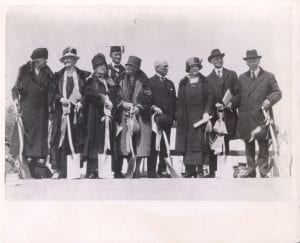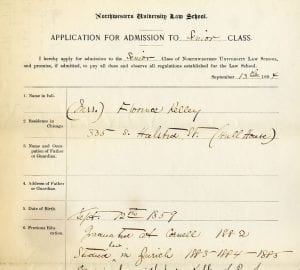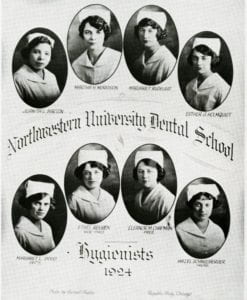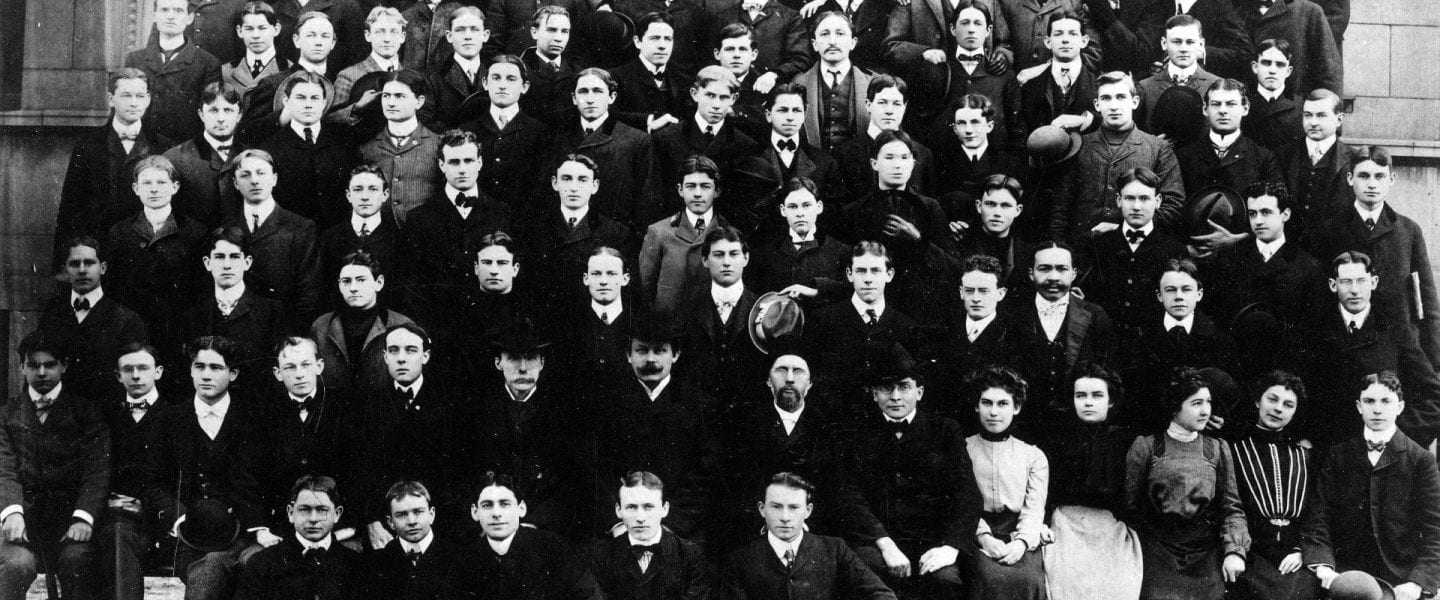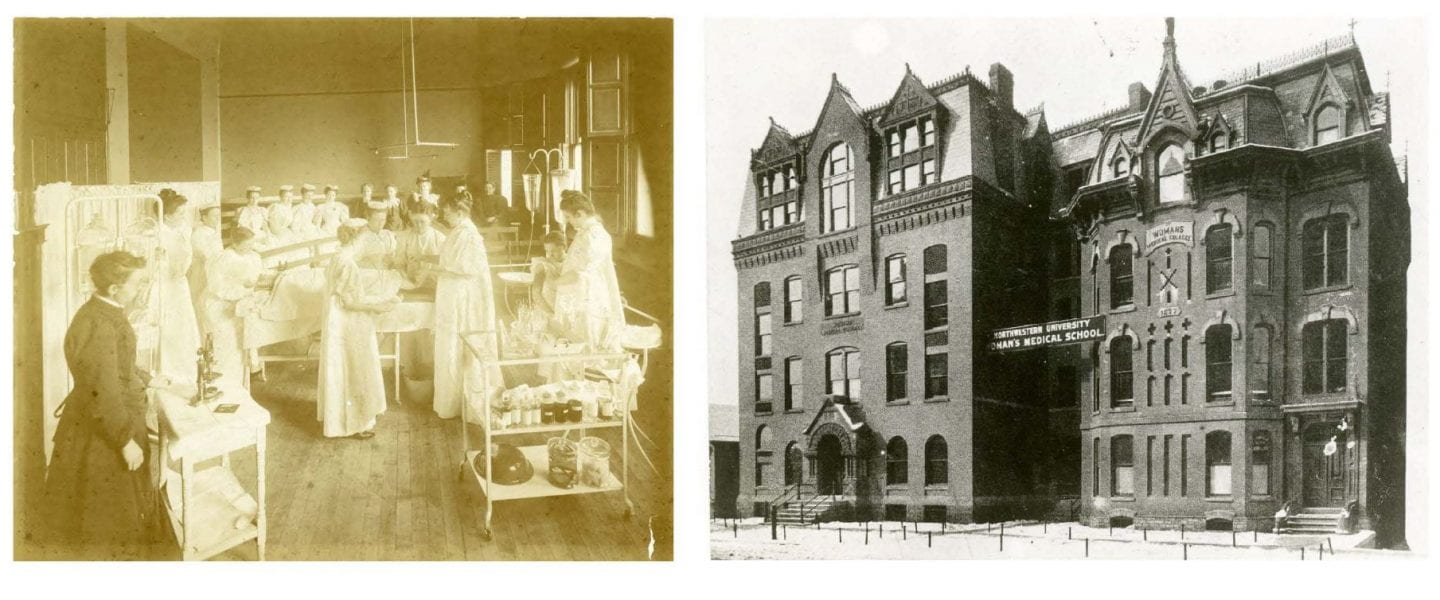When Northwestern decided to add training in the “professions” (medicine and law) to its original liberal arts curriculum, it did so by affiliating with existing schools in Chicago. These schools were considered University departments, and retained their own administration and policies, including the admission (or non-admission) of women.
In 1891, the departments — by now including pharmacy and dentistry — officially became schools of Northwestern University, and their graduates retroactively became Northwestern alumni (and alumnae). Northwestern affiliated with a women’s medical college in 1892, and created a School of Commerce in 1909. The “professional” schools remained in separate locations in the Loop or near south side until Northwestern’s Chicago campus opened in 1927.
In this article, we look at how Northwestern’s Chicago-based “professional” schools brought into focus the way educating women “upon the same terms” as men was reflected at the graduate- and professional-program level.
Coincidentally, it was the generous donations of three wealthy women—widows of Chicago businessmen—that made possible the construction of most of the buildings on the campus. Rachel (Mrs. Levy) Mayer funded the Law School, Elizabeth (Mrs. Montgomery) Ward the Medical School (which also housed the dental school), and Ellen (Mrs. George) Thorne an auditorium building. The family foundation of Mr. and Mrs. (William and Anna) Wieboldt funded the School of Commerce.
The School of Medicine (Feinberg School of Medicine)
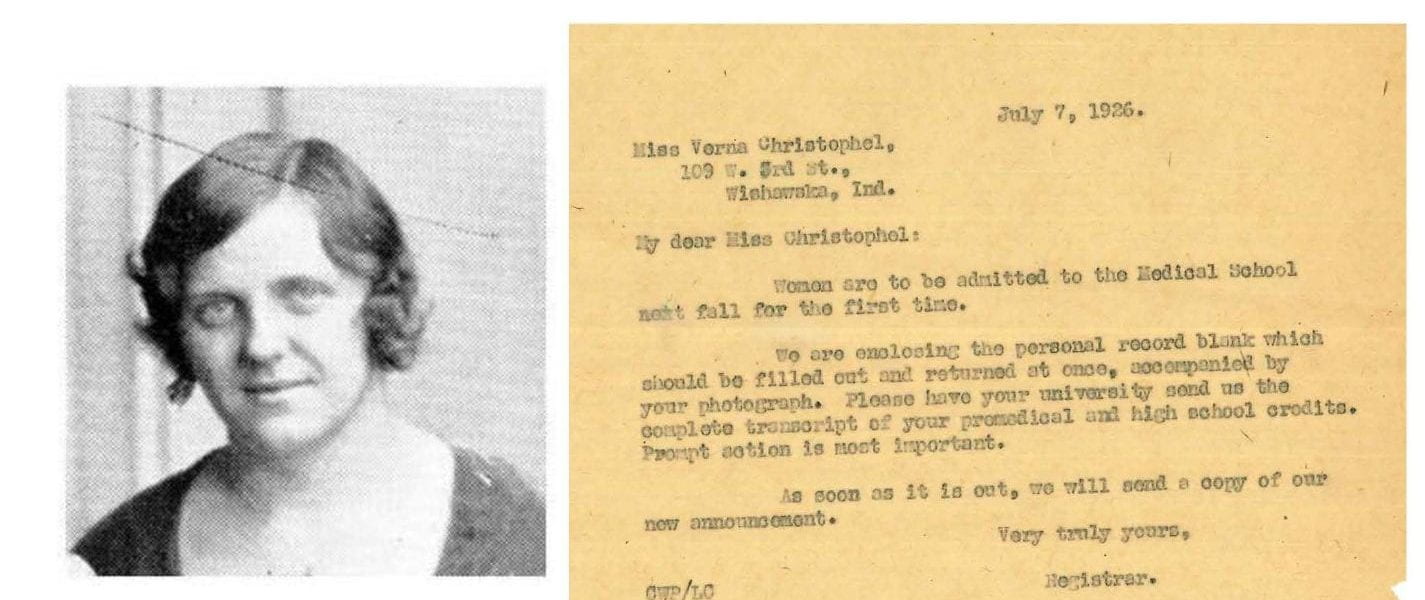
Verna Christophel, MD 1931, the first woman to graduate from Northwestern Medical School, had written to the registrar as soon as she heard that women would be admitted.
Originally founded: Lind University, 1859; became Chicago Medical College, 1863
Affiliated as a Northwestern department: 1870
Becomes a school of the University: 1891
Women admitted: In 1869 the Chicago Medical College experimented with admitting women. Three enrolled; one, Dr. Mary H. Thompson, graduated in 1870. The Medical College then stopped admitting women, after complaints from the men students. The no-women policy continued for another 50 years (although Dr. Anna Lapham became the first woman faculty member in 1919). Although Mrs. Montgomery Ward’s gift for the construction of the new Medical School building was not contingent on women being admitted, her interest spurred the school’s Medical Council to change its policy.
Firsts: In 1926, the four women entered the Medical School (because anatomical dissecting teams were made up of four students—and the “multiples of four” quota for women persisted until the early 1960s). The Medical School began a graduate medical education program in 1906; in 1922, a woman was the first to receive a PhD.
The School of Law (Pritzker School of Law)
Originally founded: Chicago University’s Law Department, founded 1859
Affiliated as a Northwestern department: 1873, as the Union College of Law, jointly administered by Chicago and Northwestern.
Becomes a school of the University: 1891 (Until 1919, the Law School awarded only a Bachelor of Laws degree.)
Women admitted: Occasionally—maybe one or two every year or so.
Firsts: Northwestern’s first woman Law School graduate, Ada Kepley (1870), actually graduated from the Chicago University Law Department. Catharine Waugh McCulloch graduated in 1886 from the Union College of Law. Mary Bartleme, in 1894, and Florence Kelley, 1895, were early graduates of Northwestern School of Law. In 1922, Maud Costigan received the first JD awarded to a woman.
The School of Commerce (Kellogg School of Management)
Founded as a school of the University: 1909 in the Loop, offering a two-year part-time diploma program
Women admitted: Women’s enrollment averaged less than 20% of men’s, and even lower in the number of diplomas and, later, bachelor’s degrees awarded. Women tended to take the office skills courses, but many took journalism courses after the School of Commerce added a Department of Journalism in 1921.
Firsts: In 1914, Flora Alforetta Voorhees was the first woman School of Commerce graduate.
The Dental School
Originally founded: Northwestern’s Dental School, 1886; merged with American College of Dental Surgery (ACDS), 1895
Women admitted: After the merger with ACDS, which had already admitted women. A few women each year earned a DDS. In the 1920s, when the Dental School added a 1-year program to train hygienists and dental assistants, the number of women enrolled increased greatly.
Firsts: In 1896, five American College students became the first women graduates from the Northwestern Dental School. Olive
In 1908, Myrtle Henderson, DDS, became the first African American woman to graduate from the Dental School.
The School of Pharmacy
Originally founded and affiliated with Northwestern as a department: Illinois College of Pharmacy, 1886
Becomes a school of Northwestern University: 1891
Women?: A few women each year
And then….: In 1917, due to dwindling enrollment, the School was transferred to the University of Illinois’s School of Pharmacy.
Firsts? The first woman to graduate was Ida Hall Roby, Class of 1889. Roby owned and managed what might have beenthe only woman-owned drugstore in Chicago. She also founded the Woman’s Pharmaceutical Association of Illinois.
The Nursing Program
Originally founded: As training schools by the hospitals associated with the Medical School
Affiliated with as a department: 1905
Admitting women: Almost exclusively. Nursing programs began, were dropped, were revived, and finally disappeared at Northwestern between 1905 until 1990. The first nursing program was supervised by the Medical School, and graduates received diplomas. An RN/BS degree program was implemented in 1943 through the College of Liberal Arts, and new versions of a nursing program under several administrative units appeared in 1951, the late 1970s, 1982 (a graduate program), and 1985 (Center for Nursing), ending in 1990. Over 5,000 women are estimated to have graduated from Northwestern’s nursing programs.
The Woman’s Medical School of Northwestern
Originally founded: Woman’s Hospital Medical College, 1870; name changed to Woman’s Medical College of Chicago, 1877
Becomes a school of the University: 1892 (until 1902)
Admitting women: Exclusively. Between 1870 and 1902, the Woman’s Medical School/College graduated nearly 600 doctors.
And then: In 1902, Northwestern divested itself of the school due to diminishing enrollment as other medical schools accepted women. The school had also suffered from a lack of support; for example, a Northwestern Trustee was quoted in a Chicago newspaper as saying “It is impossible to make a doctor of a woman…” Women could not purse a medical education at Northwestern again until 1926.
Firsts: As an alumna of the Woman’s Medical School, Emma Ann Reynolds MD 1895 was the first Black woman to get an MD from Northwestern.
Extra-Curriculars: THE LYDIANS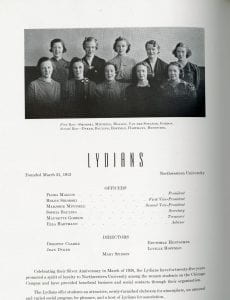
The Lydians was one of the major social organizations for women students on Northwestern University’s Chicago campus. It was founded by Flora Alfaretta Voorhees—the first woman to graduate from the School of Commerce—in 1913, when the Commerce classes were still held in a building in the Loop. Although Commerce students predominated, after the Chicago campus opened Northwestern women students pursuing any course of study could join. The Lydians provided a variety of social activities, and also invited speakers from the business, government, and journalism communities; they also published a newsletter, The Lydian Line O’ Type. The club lasted until the early 1970s.
Avenues for Research
Records in University Archives can answer straightforward questions about how many women enrolled in Northwestern’s professional schools over time, and in what fields they got their degrees. But larger questions will require much more research: What is the definition of “professional” education? What careers did women “professionals” go on to pursue? How much were their decisions influenced by societal expectations or internal University pressures? Northwestern University archivists can help researchers find the documents that dive deeper into these queries, and many more.
About this blog post
This post is based upon text and images from the Library exhibit “On the Same Terms: 150 Years of Women at Northwestern” (running until June 2020 in Deering Library) and the accompanying catalog, “On the Same Terms: The Beginnings of Women’s Education at Northwestern.” Unless otherwise noted, all documents and images featured are drawn from collections in the University Archives.
Fall, 2019 marked 150 years since women could enroll as Northwestern undergraduate students. As the University collectively commemorates this milestone — and the women/womxn who have shaped Northwestern — the Northwestern community will have many opportunities to reflect, be inspired and learn from each other. Throughout the academic year, events and programming will be held across the entire University and around the world. Visit the 150 years of women website (https://www.northwestern.edu/150-years-of-women/) to learn more and get involved.

